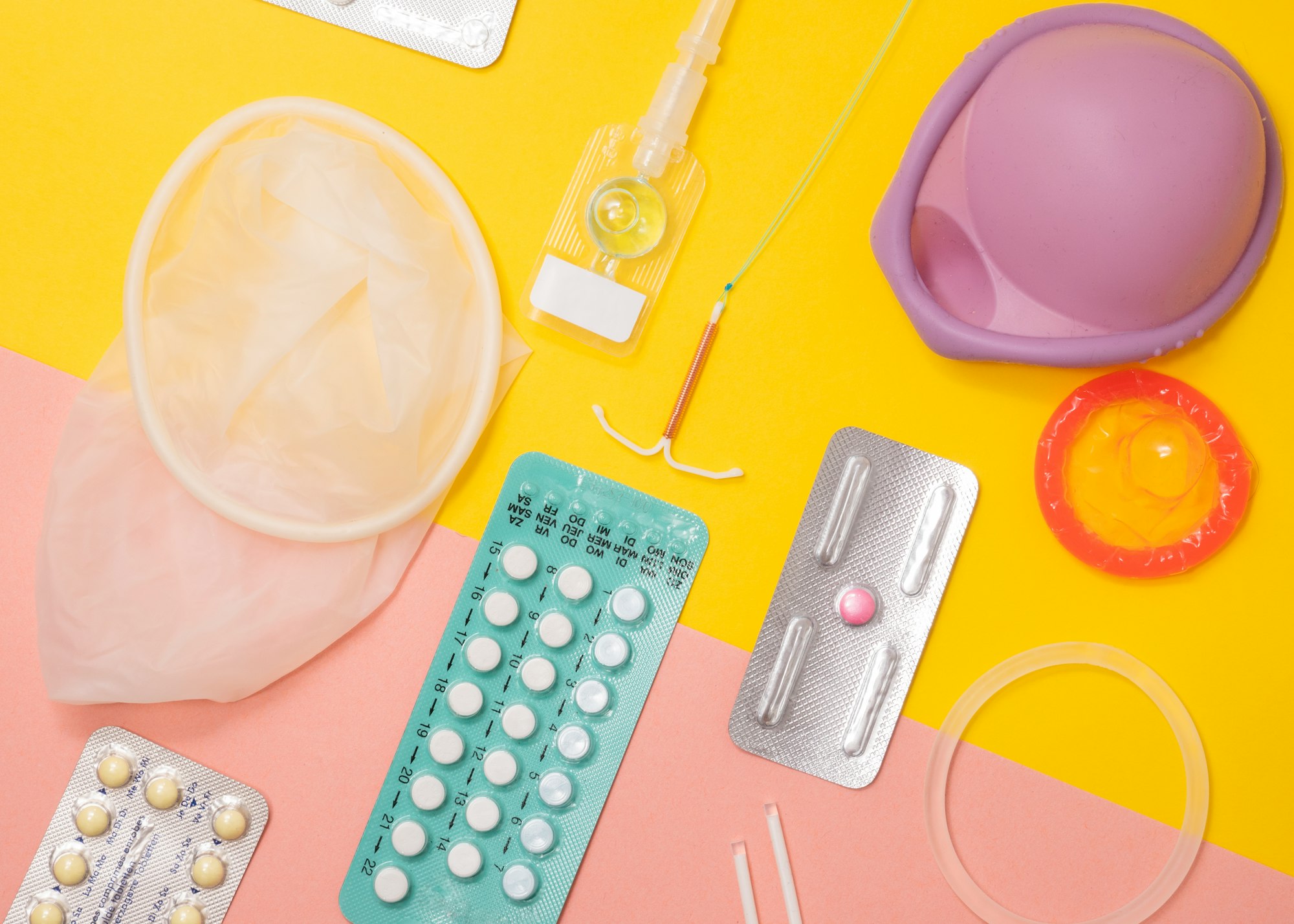Juggling newborn care, sleep deprivation, and an avalanche of new routines, many parents soon encounter a pressing question: when and how to approach contraception in the weeks and months after childbirth? Postpartum contraception when and which method to choose—this phrase, deceptively simple, often masks a whirlwind of doubts, hormonal shifts, breastfeeding schedules, and medical recommendations. Why is timing so unpredictable? Which method interferes least with breastfeeding or recovery? How soon could fertility actually return? If these questions resonate with your reality, you’re not alone. Exploring postpartum contraceptive options with clarity and confidence is a gift—to your body, your family, and your plans for the future. Here, practical advice, up-to-date science, and trusted medical perspectives come together to untangle the choices and reassure you through every stage.
Decoding Fertility after Delivery: A Delicate Countdown
You may wonder: Could fertility really return that quickly, even before periods resume? The answer—sometimes, astonishingly, yes. The return of ovulation after childbirth varies from individual to individual, with ovulation potentially as early as 21 days postpartum, especially for those not exclusively breastfeeding. For someone exclusively breastfeeding, the story shifts: higher levels of the hormone prolactin can suppress ovulation. Yet even here, the effect is unpredictable—especially if nursing frequency drops or mixed feeding begins. No two bodies follow the same script.
The Lactational Amenorrhea Method (LAM) offers more than just a medical acronym—it illustrates the fine balance between nature and necessity. For LAM to effectively shield against pregnancy (over 98% efficacy, according to clinical evidence), three non-negotiable rules must be respected:
- Your baby must be under six months old.
- All feeds (including night feeds) are breastfeeds: no long gaps, no routine formula or solids.
- Menstrual periods haven’t returned.
If any of these change (a skipped night feed, supplementing with a bottle, or spotting signaling cycle return), postpartum contraception when and which method to choose suddenly demands a new answer. The risks of short pregnancy intervals—preterm birth, maternal anemia, low birth weight—are substantial enough that major health organizations like the WHO recommend a gap of at least 24 months before trying again. Protecting that window is both gentle on the body and kind to the spirit.
Timing Matters: When Can Each Contraceptive Method Begin?
Confused about the timelines? You are not alone. Questions swirl around the earliest safe start dates for various options, especially with so many changes in your body and routine.
- Progestin-only contraceptives, including the mini-pill, implant, and injectables: Science supports their use within days of giving birth. They are designed not to interfere with milk supply—key for families choosing to breastfeed.
- Intrauterine devices (IUDs), both copper and hormonal: These marvels of convenience may be placed immediately after birth (ideally within 10 minutes of placenta delivery) or, for lower expulsion risk, from the fourth week onwards. Rapid placement can be a game-changer for those not planning a quick return to the clinic.
- Barrier methods (condoms, both male and female): Ready for use as soon as intimacy resumes. They are non-hormonal, accessible, and uniquely provide STD protection.
- Diaphragms and cervical caps: A waiting game here—the vagina and cervix need at least six weeks to return to pre-pregnancy shape before a fitting is accurate. These options require professional refitting post-birth.
- Combined hormonal contraceptives (pill, patch, ring): These must wait until at least six weeks postpartum (or even twelve if the blood clot risk is heightened). For breastfeeding families, this delay also protects milk production, as estrogen can reduce lactation volume.
- Permanent methods (sterilization): These are sometimes chosen at the moment of cesarean or scheduled later, but best reserved for those confident about their future family size.
Does timing seem confusing? Think of it as choreographing several needs—healing, feeding, hormonal rhythms—rather than a one-size-fits-all solution. Postpartum contraception when and which method to choose lies at the intersection of safety, preference, and practicality.
Postpartum Contraceptive Methods: A Closer Look at Every Choice
Hormonal Methods
- Progestin-only pill, implant, injection: Imagine a solution that fits different lifestyles: the mini-pill for those favoring a daily habit, the implant for a nearly “forget-and-go” approach lasting up to three years, and injectables for quarterly appointments. Medical evidence consistently shows these methods are safe for breastfeeding. Side effects? Some report irregular bleeding, occasional spotting, or mood shifts—but for many, these settle over time.
- Combined hormonal contraception (pill, patch, ring): A popular pre-birth favorite, the combined pill must take a backseat after delivery due to an amplified risk of blood clots and the potential dip in milk supply. If the baby is fully or mostly breastfed, the wait is non-negotiable: minimum six weeks, possibly longer.
Non-hormonal Methods
- Copper IUD: A hormone-free champion for those who value long-term peace of mind (protection lasting five to ten years) and wish to maintain breastfeeding undisturbed. Some do experience heavier periods initially.
- Hormonal IUD: All the duration benefits of the copper IUD, but with lighter periods as a bonus. Insertion can spark brief discomfort, and there is a small risk of the device being expelled, especially after immediate postpartum placement.
- Barrier methods (condoms): Straightforward, accessible, and non-hormonal, with the added shield against sexually transmitted infections—a unique advantage.
Mechanical and Low Reliability Options
- Diaphragm and cap: Only start after six weeks, with professional refitting—a step easily forgotten in the chaos of new parenthood. Their efficacy is lower than other options, so they are best combined with another form of birth control or used when alternatives aren’t available.
- Spermicides: Science cautions against over-reliance on these due to their lower success rates. Alone, they do not provide optimal protection during the postpartum window.
Natural Approaches
- Lactational Amenorrhea Method (LAM): An elegant method that harnesses the biology of exclusive breastfeeding, but only for six months and under its strict rules.
- Other natural methods (cycle tracking, withdrawal): Early postpartum, these are more wishful thinking than reliable science. Hormonal chaos and unpredictable ovulation lead to high failure rates.
Permanent Methods
- Female sterilization (salpingectomy or tubal ligation): Chosen by those certain of their reproductive plans; best reserved for when emotional and logistical certainty align.
- Male sterilization (vasectomy): A simple outpatient procedure, offering high efficacy and permanence for families ready to close this chapter for good.
Emergency Contraception: A Safety Net
- Levonorgestrel pill: Safe for most, including nursing mothers; most effective within 72 hours of unprotected sex.
- Copper IUD as emergency contraception: Only a tiny subset know this: when inserted up to five days post-intercourse, it serves as both a backup plan and a seamless transition to ongoing contraception.
Individualizing the Decision: Practical Factors for Parents
Choosing isn’t simply a medical calculation—emotional, family, and lifestyle concerns shape the decision:
- Feeding method: Breastfeeding status directly affects recommended timing and method. For exclusive breastfeeders, progestin-only or non-hormonal methods lead the pack.
- Medical history: Hypertension, migraine with aura, or history of blood clots all steer the conversation away from estrogen-containing choices.
- Family plans: Not sure if you want more children? Reversible long-acting methods—like IUDs or implants—accommodate change. Confident about completion? Permanent options may be fitting.
- Practicality: Daily pills, quarterly injections, years-long devices—each rhythm suits a different family dynamic. Condoms, ever accessible, require only a moment’s preparation.
- Values and beliefs: Some find hormonal methods reassuring, others lean toward natural or mechanical routes. Every preference counts.
Special Scenarios and Shifting Needs
After a Cesarean Section
Some may opt for sterilization at the same time as delivery; immediate IUD placement is feasible but comes with a slightly greater chance of the device being expelled. This makes a follow-up appointment critical.
Breastfeeding, Mixed Feeding, or Formula
With exclusive breastfeeding, LAM or progestin-only methods are safest and most effective. Once feedings shift—or for those who are formula feeding entirely—combined methods become possible earlier, provided there are no hazards like clotting history.
Managing Side Effects and Transitions
Undesirable symptoms? Health changes? Plans evolve? Swapping methods is not only allowed but expected. Meanwhile, bridging protection—such as condoms—can fill any temporary gaps.
Busting Myths and Misconceptions
- Breastfeeding on its own is not a guarantee; unless all LAM criteria are observed, unexpected ovulation occurs behind the scenes.
- Combined hormonal contraceptives are no-go territory for at least six weeks (often longer) if breastfeeding, owing to lactation and clotting risks.
- Barrier methods and IUDs have both earned their stripes for postpartum use, with robust evidence on their safety and effectiveness when started at the right time.
- Postpartum contraception when and which method to choose often involves detangling old myths and matching options to evolving family needs and health realities.
Key Takeaways
- Fertility can reawaken only three weeks after giving birth, before any periods return.
- Exclusive breastfeeding delays ovulation, but remains unpredictable: individualized plans are safest.
- Multiple highly effective and safe contraceptive options exist for every postpartum journey, from immediate solutions to those favoring longer-term spacing.
- Choices are rarely permanent—methods can be revisited as health, feeding, and family dynamics shift.
- The psychological and family context deserves as much attention as medical details.
- Evidence-based, up-to-date advice empowers parents to make informed decisions, tailored to their schedules, needs, and hopes.
Professional support is at hand—whether you prefer detailed medical explanations, practical tips, or an empathetic ear. If you’d like tailored advice and free health questionnaires for your child, download the Heloa app to benefit from personalized support and peace of mind for the months ahead.
Questions Parents Ask
Can postpartum contraception help regulate my menstrual cycle after giving birth?
After childbirth, your menstrual cycles may be irregular for a while, whether you’re breastfeeding or not. Some contraceptive methods, particularly hormonal options like the mini-pill or hormonal IUD, can offer more regular bleeding patterns over time. However, every body responds differently and spotting or irregular cycles can still happen during the first months. If you notice changes that worry you or if your bleeding pattern seems unusual, don’t hesitate to talk to your healthcare provider. Your experience is unique and support is always available to help you feel confident and reassured.
Is it safe to use an intrauterine device (IUD) right after delivery?
Many parents wonder about the timing for placing an IUD. In most cases, an IUD can be safely inserted immediately after childbirth, even before leaving the hospital. This early placement is convenient for many families and is considered safe by health professionals. Occasionally, the body’s natural changes after delivery may increase the chance that the device moves or is expelled, so a follow-up check is sometimes recommended. Rassurez-vous, if you feel any discomfort or if you have concerns after IUD placement, a quick consultation can easily check that everything is well positioned.
How do I choose a contraception method if I have health concerns like high blood pressure or migraines?
Your health history is important when picking a contraception method. For example, if you have a history of high blood pressure, migraines with aura, or blood clots, your provider might suggest avoiding estrogen-containing methods such as the combined pill, patch, or ring. Progestin-only methods (mini-pill, implant, injection) or non-hormonal options (copper IUD, condoms) are often recommended and can be tailored to your needs. Never hesitate to share any medical conditions with your doctor—they are there to help you find the safest and most comfortable solution for your situation. Your well-being remains at the heart of every recommendation.









